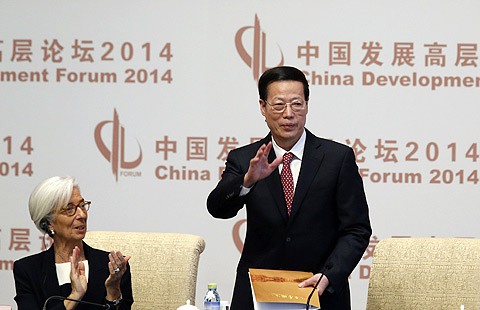Transition to green economy requires new metrics
Updated: 2014-03-27 08:51
By Andrew Sheng (China Daily)
|
|||||||||||
Sesame Street's Kermit the Frog once lamented that "it's not easy bein' green." Today, this sentiment is surprisingly relevant to the global economy - only it is becoming green that is the problem.
Last September, the Intergovernmental Panel for Climate Change warned that if the world sticks with "business as usual," global temperatures will rise by 4��C to 6��C - far beyond the 2��C increase that has been deemed "safe". This prompted UN Secretary-General Ban Ki-moon to challenge political, economic, and financial leaders in January to intensify their efforts to achieve a new global agreement on climate change by 2015.
But, as important as high-level deals are, they will amount to little unless they are backed by considerable investment in areas like smart grids, energy storage, and renewables. Indeed, the International Energy Agency estimates that nearly $1 trillion worth of investment will be needed annually between now and 2050 to put the world economy on a more sustainable path.
While that may seem like a lot of money, it is the equivalent of only 1 percent of global GDP, and less than 0.3 percent of global financial assets. Moreover, since 2007, major central banks have proved that they can augment their balance sheets by more than $1 trillion annually, without triggering inflation. In other words, the world can afford the transition toward a green economy.
Nonetheless, last year, green investment amounted to only $254 billion - implying an annual shortfall of nearly $750 billion. To bridge the gap, advanced-country governments are leveraging their limited public funds to catalyze private-sector investment. At the same time, developing countries are rapidly increasing their contributions to green finance, with domestic clean-energy financing in non-OECD countries having surpassed OECD-country levels in 2008.
But the problem remains that the current structure of markets impedes their ability to adjust to climate change. What is really needed is not money, but the political will to correct market failure by bringing about fundamental shifts in the metrics, institutions, and policies that govern how investors evaluate economic activities.
A green project is bankable only if it provides a clear view of its real costs and benefits. The return on private capital (profit and loss) plus the return on "social" capital must be positive. The current GDP metric ignores the negative externalities of fossil-fuel-based private activities, leading to overwhelming pollution and gross wastage of non-renewable natural resources. Without full cost accounting, some of the worst activities will continue to be immensely profitable.
 |
 |
| Top 10 cities with worst smog in China |
Today's Top News
Xi urges inter-civilization exchange, mutual learning
First lady named UNESCO envoy
Civil service jobs in less demand
China to tighten cyberspace security
China, France sign business deals
Hunt focuses on China satellite pics
Jet search still 'remains priority'
11 dead in lingerie factory fire
Hot Topics
Lunar probe , China growth forecasts, Emission rules get tougher, China seen through 'colored lens', International board,
Editor's Picks

|

|

|

|

|

|





